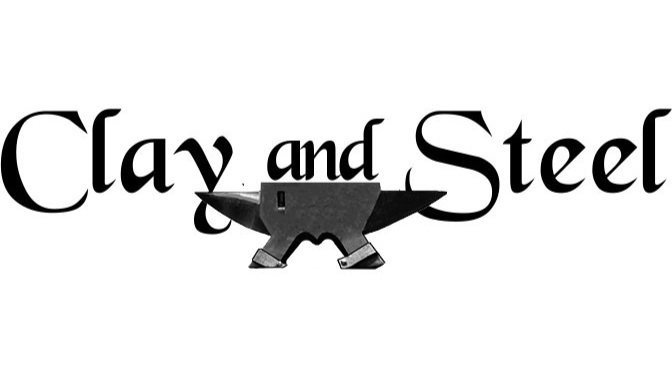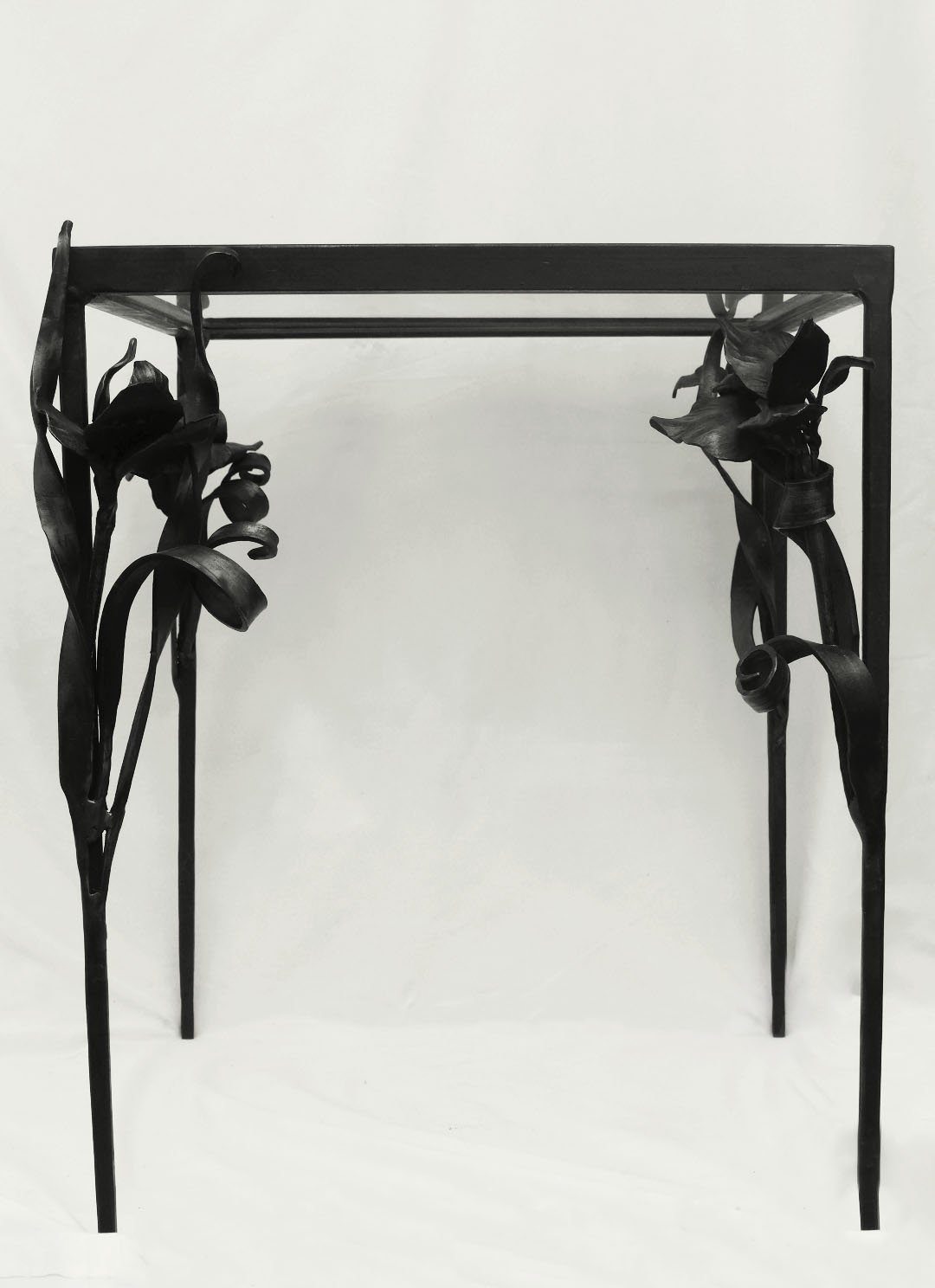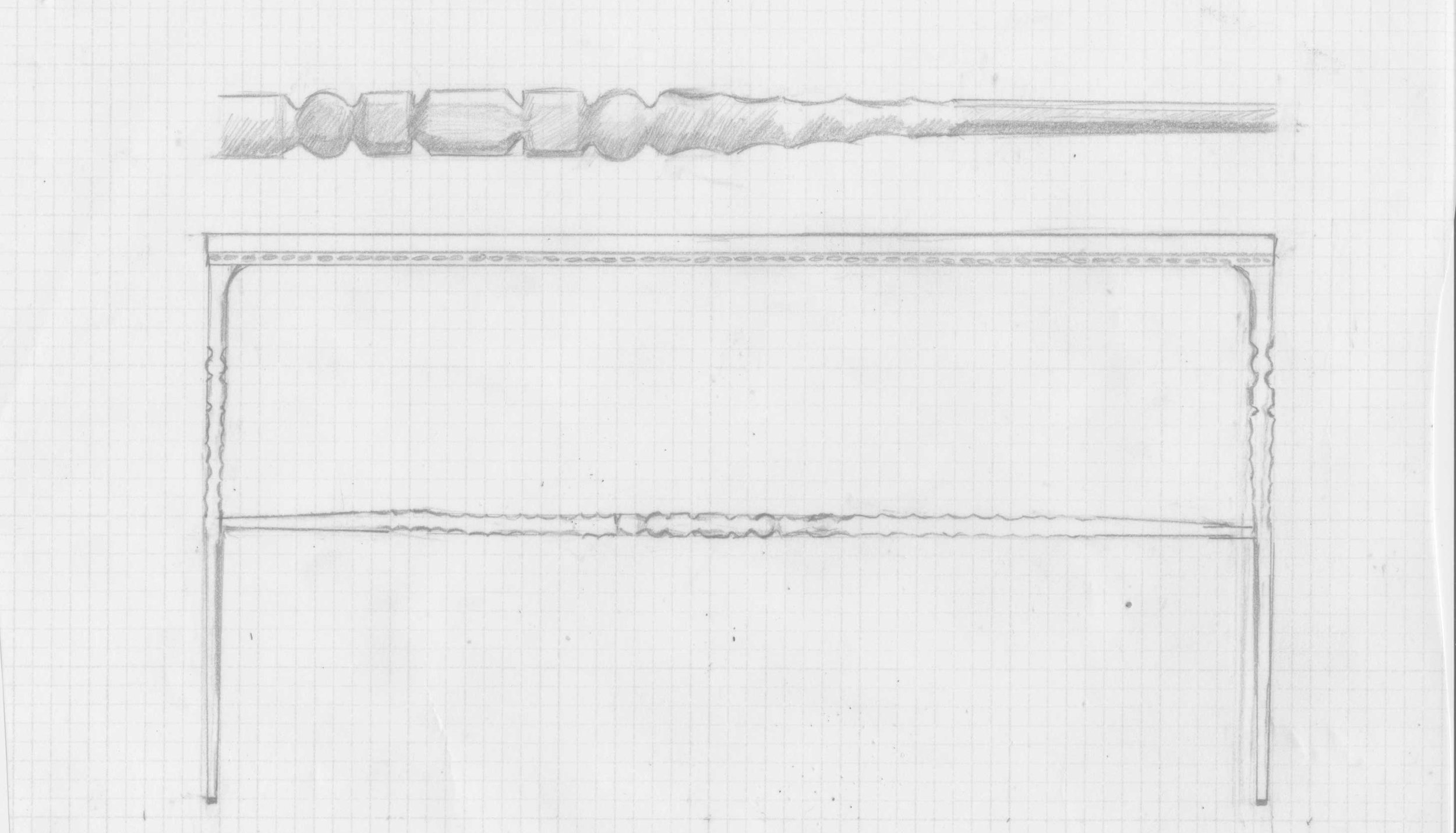How to Design the Perfect Wrought Iron Table for Your Home
Make it yours.
(Left: Wrought Iron Iris Table by Celeste Flores, Clay and Steel)
A custom wrought iron table can be a beautiful addition to your home. It adds a touch of elegance and uniqueness that can't be found with mass-produced pieces. Wrought iron is the colloquial term for hammered iron forged by a blacksmith. However, this guide can help you to consider how to create any iron table, whether you are building it yourself or designing with the help of a fabricator. With this guidance, you can create a table that is both functional and fits your personal style.
Define the purpose:
Before you start designing your custom wrought iron table, determine its purpose. Will it be used as a dining table, a coffee table, or a side table? Understanding the table's purpose will help guide your design decisions.
2. Determine the size and shape:
Consider the size and shape of the table based on its intended use and the space it will occupy. Think about the dimensions of the room where the table will be placed and make sure it fits comfortably. You can speak to your fabricator about standard heights. For instance a dining table is often about 30” tall.
You will want to consider the shape of the table top. Will it be round, rectangular, or square? Perhaps a half-oval for a side table or an irregular shape for an organic asethetic.
3. Choose the material for the table top:
< Walnut Table top by Jolie Karno with wrought Iron Bowls
Select the material for the table top. Wood and marble are popular choices, but you can also consider glass, concrete, or other materials.
Solid wood is gorgeous and matches any house. It can be especially at home in Craftsman, Victorian or other classic older house.
Glass can look very chic but takes some care to upkeep.
Think about the durability, maintenance, and aesthetic appeal of each option. You can ask your fabricator for suggestions. Consider what other materials are used throughout your home to keep the style consistent.
4. Find Inspiration:
Gather inspiration for the wrought iron design by looking at different retailers, Pinterest, or even taking a stroll in nature. Look at different styles and patterns to inspire you, and select a motif and style of table legs that complements the material and style of the table top.
Work with a fabricator to decide on the kind of table legs that will complement the motif and support the table top.
5. Sketch out the design:
Work with your fabricator to sketch out the design on paper, including the dimensions and details of the wrought iron base and the shape and size of the table top.
The fabricator should refine the design using precise specifications until you are satisfied with the overall look and feel. Consider the details of the base, such as the thickness of the legs and the spacing of the supports, and make sure they are proportional to the table top. For complex or highly specialized pieces, test pieces made to scale may be necessary.
6. Choose the finish:
Decide on the finishing touches for the table, such as the color of the wrought iron, which could include options like heated beeswax, rusted patina, paint, or a wire brushed finish. Choose the treatment for the table top, considering the longevity of the finish and what upkeep will be necessary. Talk with your fabricator about the pros and cons of each option.
7. Build the final product:
The fabricator can then begin the project and keep you update with picture on the progress. Once production begins, any requests for changes are considered a change order and will be subject to additional costs. Keep in mind that custom projects have no prior research and development, so there may be testing and changes needed to meet the final expectations of the project.
By following these steps, you can create a table that will be a beautiful and functional piece in your home. With the right fabricator and a little bit of creativity, your perfect table is just a few steps away.
(Above: Forged Iron Table base by Celeste Flores, Bullseye glass fused table top by Karl Hauser)




